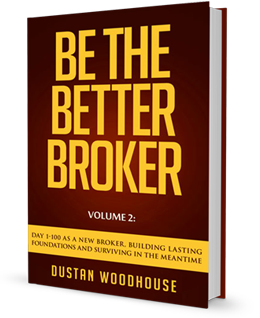An excerpt from Chapter 29 of Be the Better Broker, Volume 2.
Your beliefs become your thoughts,
Your thoughts become your words,
Your words become your actions,
Your actions become your habits,
Your habits become your values,
Your values become your destiny.
– Mahatma Gandhi
This quotation bears repeating—it bears memorizing—for these are words to live by. And I try to do so, though admittedly I am not always successful. But I try.
Understanding how to form new habits, and perhaps break a few old ones, is important. For greater depth and assistance with this topic, be sure to read The Power of Habit by Charles Duhigg.
Some of this may seem like overkill for a Broker working on one lonesome file. But as you progress and you get to a point where you’re working on 10, 20, 30 or more active files at one time, having these systems rooted in your subconscious as part of a natural and consistent process will pay massive dividends for you.
Contact cards
If you’re building a contact card for every single person who ever calls you, (as per chapter 10 in Volume 1) that’s awesome, and you’re ahead of many of your peers. Several dozen Brokers from across the country emailed me just to cite that one tidbit from Volume 1 as being pure gold.
In doing so, they have found themselves referring other experts out to their own clients more often. This, in turn, creates reciprocity. Please share the contact card–building habit with all your referral sources, clients, Realtors and accountants, as it will, in turn, elevate their own game. It can be a contact card challenge: lowest score at month end buys coffee.
Part of CRM is inserting yourself into others’ CRM programs. Are you emailing your own contact card to each and every client, client’s Realtor and so on? You should be; you want to make yourself easier to contact and easier to refer.
Folders
The 43 folders system is described in great detail in the book Getting Things Done by David Allen. You can also look up a detailed description on Wikipedia. I am not going to rewrite the mechanics of it here. It is easy enough to search out.
Google “43 folders” and you will find a few YouTube videos explaining the system. It takes a moment or two to wrap your brain around, but it can be a game changer once implemented.
Consider pausing at the end of this post to implement the mechanics of the 43 folders system, and either adding a few items to your shopping list, or actually heading out to an office supply store and buying these items now:
- A small filing cabinet (I have a funky bright-red, single-drawer unit on wheels from IKEA ).
- A dozen hanging folders—to label for each month.
- 31 basic manila file folders—to number for each day of the month.
This is not my primary organization tool, but it is very effective for things like various annual licence and insurance renewals (which can be dropped into the applicable month’s hanging folder).
The big three
Another simple daily habit is to write out the “big three”—the three key to-dos for the day, key because they are most difficult, or most important, or most likely both of those things at once. For most of us there is a certain satisfaction both in writing out a few tasks to do and, in particular, in taking a pen and putting a line through those words once the task is completed.
By now you are noticing there is a fair bit of planning, writing and time being taken to think things through here, and we have not even dug into our first applicant’s file. It is all about habits, systems and processes… and forming the habit of creating and using systems and processes.
